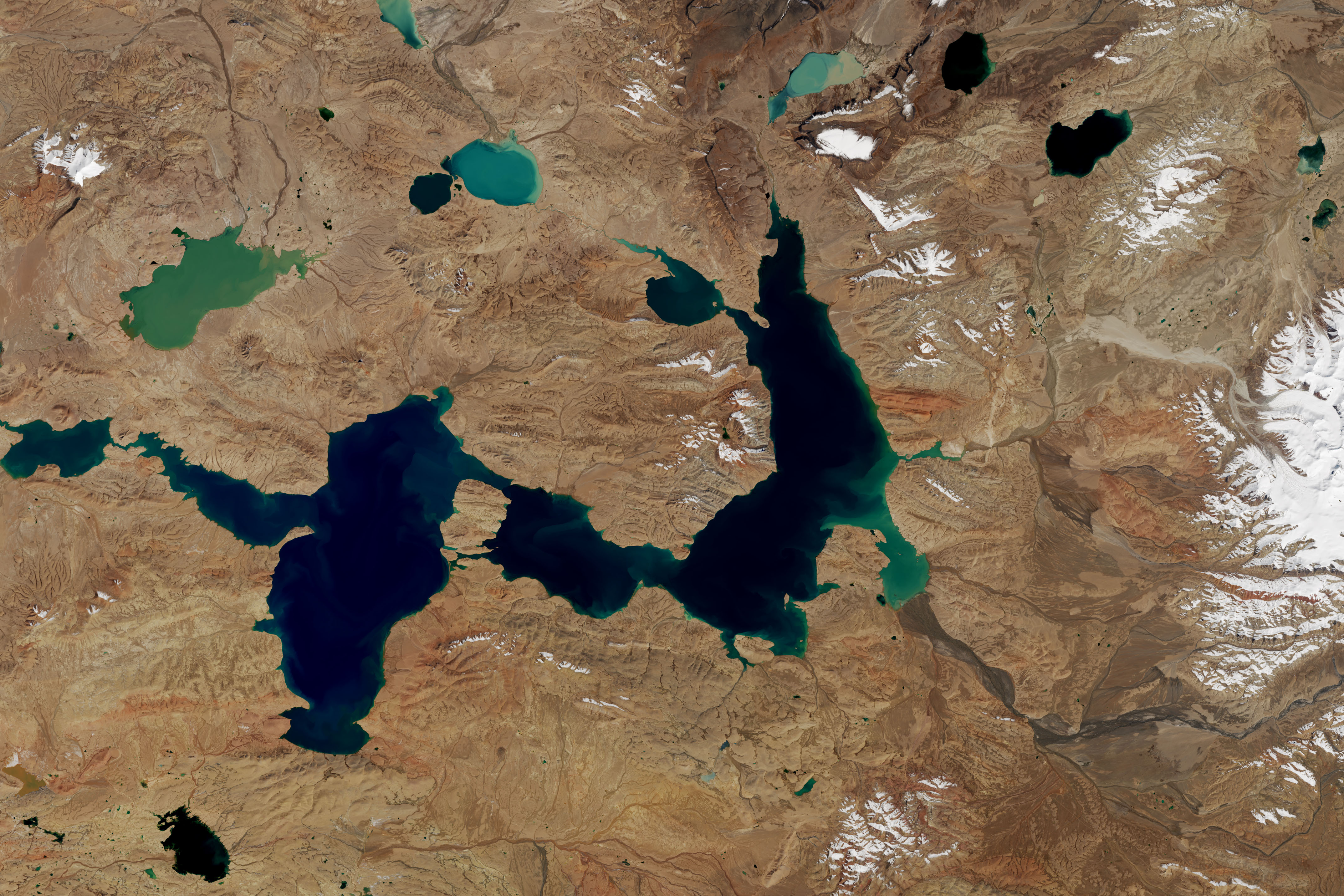The Third Pole Melts
Geogrpahic boundaries of The Third Pole (credit: The Third Pole Environment program)
The Tibetan plateau, with elevations averaging 12,000 feet above sea level, is often call The Third Pole. Next to the Arctic and Antarctic, this high plateau holds the third largest storehouse of fresh water in the form of ice, glaciers, and permafrost on Earth. This region is melting rapidly and more moisture is now falling as rain than snow due to the changing climate. Re-photography, by NASA's Landsat Earth monitoring satellites, re-captured images taken in 1987 that shows just how much has changed in the ice-water balance in less than 40 years.
The Third Pole region stretches from the Pamir and Hindu Kush mountains in the west to the Hengduan mountains in the east. It is bounded by the Kunlun and Qilian mountains to the north and the Himalayas on the south. The extent of the vast plateau spreads across an area encompasing more than 1.6 million square miles in potions of nations including Afghanistan, Bhutan, China, India, Nepal, Pakistan, Tajikistan, and Tibet. It is the 'water tower' for the Bramaputra, Ganges, Indus, and Yangtze rivers which all originate in the headwaters of the mountains surrounding the plateau.
According to NASA:
Landsat images of lakes west of a small mountain range, the Tanggula mountains, in central Tibet—offer a view of changes caused, in part, by glacial retreat. The original image was acquired in October 1987 while the second was recaptured in October 2021 showing the same area. The two largest lakes—Chibzhang Co and Dorsoidong Co—have grown larger over this timeline as glaciers have thinned and shrunk. In the first image the two lakes are separated by a strip of land. The source of Dorsoidong Co’s meltwater comes from mountain glaciers. Investigators who analyzed multiple decades of Landsat imagery determined the lake's area grew by 23% between 1979 to 2017 from ice melting and increased rainfall in this region.

Tibetan plateau lakes, 10-12-1987 (credit: Landsat)

Tibetan plateau lakes, 10-9-2021 (credit: Landsat)
The former Prime Minister of Bhutan Tshering Tobgay gave a presentation to a TED conference audience about The Third Pole and why it so important to his nation and the billions of other people who live around it. It is often said that events stay in a place where they occur. At The Third Pole, what happens there definietly does not stay there. WHB